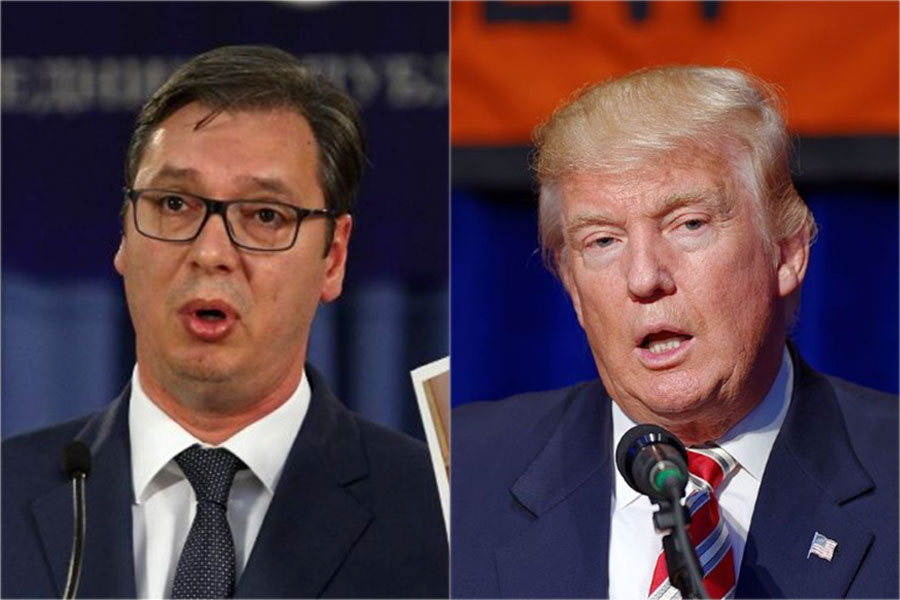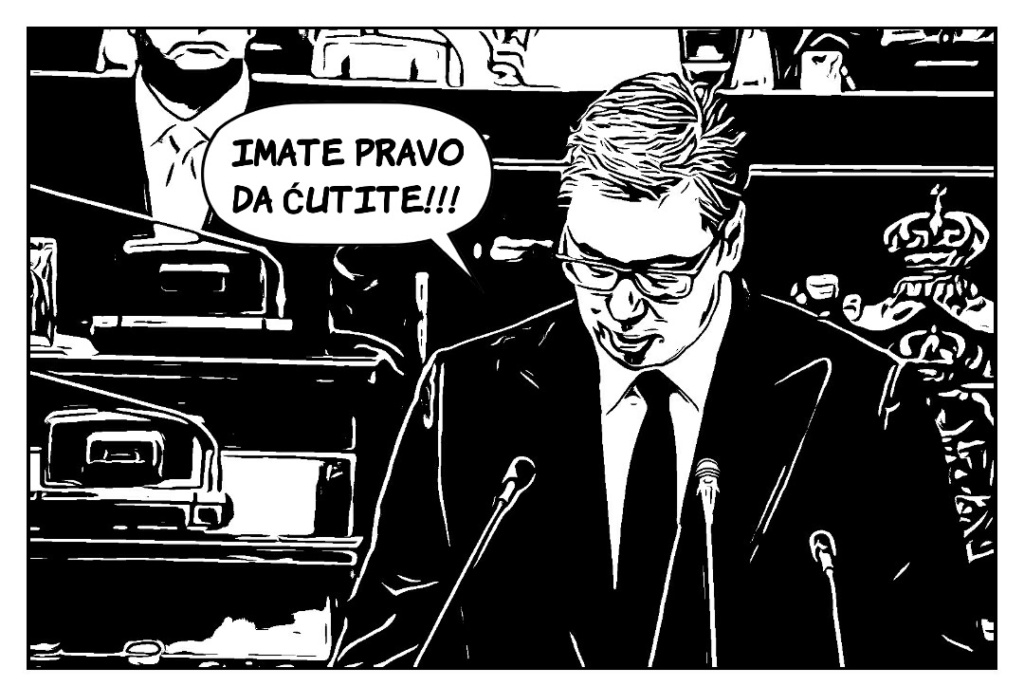Also known as “mission investing”, impact investing aims to generate social value alongside financial returns.
From safeguarding editorial independence to keeping local journalism alive in so-called news deserts, experts explored how investment-driven alternatives to grant-giving can strengthen media resilience at a roundtable discussion at the IPI 2022 World Congress.
Organized by the International Press Institute, Media Impact Funders and the Global Forum for Media Development, the Sept. 9 roundtable in New York brought together foundations with investors, media development experts and journalists.
“We are reminded that authoritarians depend upon control and capture of media outlets and companies, and that does not happen overnight,” Vincent Stehle, executive director of Media Impact Funders, said.
“So philanthropy needs to wake up to its obligations and opportunities in providing the investment capital for media companies that will sustain independent journalism that democracies require.”
In the United States, research by Media Impact Funders shows that foundation grant-giving for journalism quadrupled over the past decade or so, hitting $332 million as of 2019, compared with $69 million in 2009.
“Over the same period of time, philanthropy [in general] has also embraced mission investing and the entire field of impact investing has exploded as financial markets have become much more sensitive to the social impact of economic activity,” Stehle said.
“So what has lagged, at least up until now, is a connection between these two trends. And hopefully…we can illuminate a path where philanthropy can see that there are really great opportunities for mission investments in an industry where there are still strong and sustainable revenues that merit consideration for investment.”
Meanwhile, global overseas development aid for independent journalism has remained stable at around $500 million a year for the past two decades, said Mira Milosevic, executive director of the Global Forum for Media Development.
“However, donors are aware of the need that’s growing and want to do more and are looking more and more at ways to collaborate and contribute, not only to grant-giving but also to the impact investing sector,” she said.
Excited to be participating in the Investing in the Future of Independent Journalism Funder’s Roundtable at Columbia University. Speaking my language!! #IPIWoCo https://t.co/y11ueEM7pa
— Laurie Lane-Zucker (@LaurieLZ) September 9, 2022
An antidote to media capture?
Moderated by Anya Shiffrin, director of technology, media, and communications at Columbia University’s School of International and Public Affairs, the roundtable homed in on the promise of impact investing as a tool to counter “media capture”.
Media capture is a phenomenon in which vested political or business interests acquire formerly independent media.
“The only way to protect the independent editorial policy of any company is to protect the ownership of that company,” said Saša Vučinić, co-founder of North Base Media, a global venture capital firm that has invested in digital media for a decade.
“There’s no other sustainability. There’s no sustainable newsroom if the company is not sustainable. If you want to take that one step further, I would say the way that we can see how bright the future of independent media is, is directly proportional to the amount of money that we can raise to make investments in independent media outside the U.S.”
One organization that has pioneered impact investing as a means to safeguard editorial independence is the New York-based Media Development Investment Fund (MDIF), whose investment portfolio includes Rappler, the Philippine news site founded by Nobel Peace Prize laureate Maria Ressa.
In December 2021, MDIF launched Pluralis, an investment vehicle for independent media companies at risk of capture by governments and vested interests in Europe. So far, it has raised $40 million of its $100 million target.
Last year, Pluralis acquired a 34 percent stake in Slovakia’s Petit Press, publisher of the Sme daily newspaper. The move freed Sme from financial group Penta Investments, which was embroiled in a political corruption scandal when it acquired a minority stake in the publisher in 2014, prompting a walk-out by most of the Sme newsroom.
In 2021, Pluralis also took a 40 percent share of Polish media company Gremi Media S.A., publisher of the influential Rzeczpospolita newspaper.
“The only way to counter media capture is by taking an ownership position, either by strengthening the ownership that is committed to an independent editorial line or intervening and in a way competing for the ownership of a company against a state-controlled buyer,” MDIF’s chief executive, Harlan Mandel, said.
Pluralis draws its inspiration from the impact investing world, he added.
“What’s unique about the fund is its structure and its ownership. It’s structured as a holding company. It’s an evergreen model, meaning that instead of a typical investment fund, where you would aim to exit a company within a certain number of years, there’s no pressure to exit unless it’s a mission-aligned exit.
“It’s a blended capital model, so it’s a combination of philanthropy, high-quality Western European media companies and impact investors coming together, and they all have different strengths.
“Having the media companies involved brings tremendous access to know-how and knowledge transfer. Having philanthropy involved provides a layer of risk mitigation; they can reduce the risk for more commercial investors. And those commercial investors help provide the scale that’s needed to do something like this.”
As news outlets rethink business models & threats to press freedom multiply, what can media funders learn from the world of impact investment?
Join #IPIWoCo's roundtable hosted by @globalfreemedia, @MediaGFMD @MediaFunders @anyaSIPA
Check it out!
https://t.co/6hyZGKEkZd pic.twitter.com/WMjOqJW6eu
— IPI – The Global Network for Independent Media (@globalfreemedia) August 26, 2022
Media as a public good
One of MDIF’s investments is in Agora, owner of the liberal Gazeta Wyborcza daily newspaper in Poland, where the ruling Law and Justice party has gone out of its way to shrink the space for independent media.
“I’m very happy to hear this phrase ‘impact investment’, underlining the fact that what is important in investing is not really making the media outlet profitable, but to make it more impactful,” Joanna Krawczyk, president of Gazeta Wyborcza Foundation, said.
“This is very important when you have this line of thinking about media as a public good. If you treat it as a public good, then you don’t think about profit as such. You think about making it sustainable.”
Another news outlet that has received MDIF investment is the Daily Maverick in South Africa.
“If I have any advice to give to the investors and the foundations and people who actually have money is that if the market is developed, if the national players are really strong — probably in Asia and definitely in America — by all means, please do invest into smaller local media deserts, because that’s where it’s important,” Daily Maverick Editor-in-Chief Branko Brkic said.
“In places like South Africa and a couple of other countries that come to mind, the desert is the entire country, the entire media. So probably the best investment would be in the media companies that can actually hold the country together and bring about change.”
Zoe Titus, director of the Namibia Media Trust, echoed the sentiment, noting that the health of Namibia’s largest daily, The Namibian, was a matter of national interest since a “triple whammy” of digital disruption, economic downturn and COVID had resulted in a 37 percent retrenchment of newsroom staff.
“This is legacy media in the best sense of the word,” she said. “And for Namibia, this particular newspaper is of critical importance. It’s part of the DNA of the country. It’s very much part of the liberation movement of the country.
“And I think the challenge here is about fully understanding the sustainability and assisting The Namibian in all the media company, the group, in terms of its transformation.”
‘Falling organizations’
Even mature democracies with a history of robust independent media are not immune to media capture, the panelists agreed.
“Part of our impact thesis for media in the U.S. is that ownership structures are really the intervention point for sustainability and also, frankly, for media capture,” said Elizabeth Hansen Shapiro, CEO of the National Trust for Local News.
“One of the things that keep me up at night is that media capture is on the shores of the U.S. It’s here and it’s growing and I don’t think we have the tools to combat it.”
The National Trust for Local News seeks to support community news organizations across the United States by catalyzing capital, promoting new ownership structures and encouraging business transformation.
“Part of what we are trying to do in states around the country is pilot a conservancy model for acquiring small legacy titles, converting them to non-profits where that makes sense, or other mission-aligned structures, and really treating them as the public assets that they are and protecting them from both financial capture, as we’ve seen plenty of in the U.S., and also political capture,” Shapiro said.
Carlos Barrionuevo, director of the Boulder, Colorado-based Public Media Company consultancy firm, stressed the importance of evaluating investment models that can work for public media.
“There’s this moment in time where we have an opportunity to make sure that we catch these falling organizations,” he said.
“Newspapers themselves are a business, a sustainable model that’s been going for many years. Public media is also another sustainable model that has been going for many years. We need to continue to look at these different business models and how they can work with each other.”
He added: “We need to embrace the sustainable models we already have and leverage those as well.”
All about sustainability
But sustainability is easier said than done.
“I think about sustainability at two different levels,” said Duc Luu, director of sustainability initiatives and journalism at the Miami-based Knight Foundation.
“One is at the individual newsroom level where we are trying to help newsrooms experiment with new revenue ideas. We’re trying to help them diversify their revenue models. We’re trying to help them lower the costs associated with sustaining and growing their newsrooms.
“And then sustainability for me at the ecosystem level is about how we can help catalyze new funders, new talent pipelines, new resources to come in and support the broader journalism ecosystem in a way that it isn’t already.”
For Sharon Moshavi, president of the International Center for Journalists, sustainability is all about “changing a mindset”.
“You see journalists who have started small and medium news organizations — the business part is the afterthought. It’s the thing they don’t want to do… It’s always: ‘Oh, I have this great editorial plan,’ and I’ll say, ‘Well, do you have a business plan?’ ‘Oh, I’ll think about that later.’”
‘Equitable media’
In the United States, the Ford Foundation has led the way in championing philanthropic impact investing as a lever of change. In 2017, it committed $1 billion of its $12 billion endowment to mission-related investing over the next decade — the biggest such commitment of any foundation.
While much of that money goes to flagship causes such as affordable housing and access to financial services, Ford Foundation supports what it calls “equitable media”, meaning news outlets or projects run by or for historically overlooked groups, especially people of color.
“The way we think about investing in journalism is really investing in media as a whole,” Gerald Pambo-Awich, investment officer for Ford Foundation’s mission investments, said.
“And thinking about the power of storytelling in various forms to really shape the perceptions of society — our values, our systems of belief — and deepen our understanding of the world. And when we look at who’s shaping that and the gatekeepers, there’s a real unfairness to it in terms of who’s a gatekeeper and therefore which stories are valued and which stories get out there.”
In January 2022, Tracie Powell, a former fund manager of the Racial Equity in Journalism Fund at Borealis Philanthropy, launched the Pivot Fund, a venture philanthropy organization with ambitions to invest $500 million into independent community news for black, indigenous and other people of color.
“I immediately knew that just capital investments weren’t enough,” she said. “We started out by delivering some capacity-building services, consulting services, helping folks write job descriptions and do recruiting and hiring, connecting them with fundraising consultants, membership consultants, working with the Center for Cooperative Media and doing some infrastructure building around collaborations.”
She added: “You cannot get to sustainability if you don’t have capacity.”



 Vučić i Tramp: Netrpeljivost prema medijima i podrugljivo odbacivanje drugačijeg mišljenja
Vučić i Tramp: Netrpeljivost prema medijima i podrugljivo odbacivanje drugačijeg mišljenja Saragusti: Niko sada nije bezbedan. Zločini su jezivi. Novinari su ubijeni dok obavljaju svoj posao
Saragusti: Niko sada nije bezbedan. Zločini su jezivi. Novinari su ubijeni dok obavljaju svoj posao Snaga dobre priče: O mitologiji medija
Snaga dobre priče: O mitologiji medija
Ostavljanje komentara je privremeno obustavljeno iz tehničkih razloga. Hvala na razumevanju.